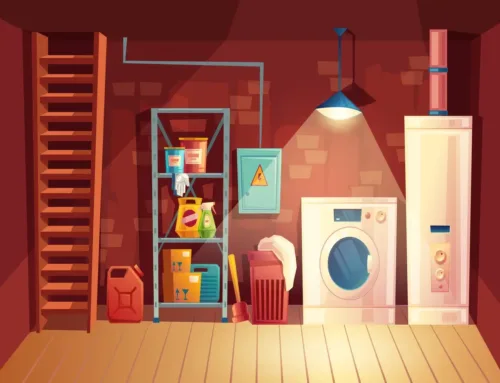Introduction
Indoor air quality dramatically impacts our health. Clean air is essential since we spend most of our time indoors in homes, schools, and businesses. Elite Inspections steps forward to ensure safe and healthy living and thus guides you on the matter with this detailed blog.
In this blog, we will learn about IAQ, indoor air quality tests, and the benefits of using them in our homes and offices. The process of how to test Indoor air quality will also be examined. Let’s begin.
Understanding Indoor Air Quality
Understanding indoor air quality testing is crucial. It refers to pollutants like dust, allergens, VOCs, mold, and other health hazards in the air. Common indoor air pollutants include:
Particulate Matter (PM)
Tiny particles are suspended in the air, often from sources like smoking, cooking, or outdoor air pollution. Fine particles can penetrate deep into the lungs and cause respiratory issues.
Volatile Organic Compounds
Paints, cleaners, adhesives, and furniture emit organic compounds as gases. VOCs can cause headaches, dizziness, and respiratory irritation if exposed for long periods.
Carbon Monoxide (CO)
Gas-powered stoves and automobiles release non-reactive gas. Carbon monoxide in high concentrations can kill.
Radon
One that can infiltrate into structures from the ground up and cause radioactive contamination. The risk of developing lung cancer after prolonged exposure to high radon levels is well established.
Mold and Mildew
These are fungi that thrive in damp environments and can cause allergic reactions and respiratory problems.
Tobacco Smoke
Indoor smoking is terrible for your health and the health of anyone around you because of the toxins and particulate matter it releases.
Biological Contaminants
Microorganisms such as bacteria, viruses, pet dander, and dust mites can cause allergens and respiratory issues.
How to Improve Indoor Air Quality
Children, older adults, and others with respiratory issues need a healthy indoor atmosphere. We can improve indoor air quality and living and working conditions.
Ventilation
Proper ventilation is essential to bring in fresh outdoor air and remove indoor pollutants. This can be achieved through natural ventilation (opening windows) or mechanical ventilation systems.
Air Purifiers
HEPA-filtered air purifiers are effective at removing airborne particles and allergens.
Controlling Humidity
Keeping indoor humidity levels between 30% and 50% can help prevent mold growth and dust mites.
Source Control
Minimize the use of products that emit VOCs and avoid smoking indoors.
Regular Cleaning
Regularly clean and dust surfaces to reduce the buildup of allergens.
Monitoring
Consider using indoor air quality monitors to keep track of pollutant levels and take corrective action if necessary.
Professional Inspection
If there are concerns about specific pollutants like radon, it’s best to consult professionals for testing and mitigation.
How to Test Indoor Air Quality
Conducting an indoor air quality test is a systematic process that helps identify potential pollutants in your indoor environment. For accurate and complete results, professional testing is recommended over DIY kits. Professional indoor air quality assessments evaluate pollution levels in your home or office using sophisticated equipment. Here are some methods how to test indoor air quality:
Home Test Kits
DIY indoor air quality test kits detect VOCs, formaldehyde, radon, mold, and allergies. These kits include instructions for sample collection and lab analysis. While they can provide some basic information, they may not be as accurate as professional testing.
Indoor Air Quality Monitors
Real-time indoor air quality sensors measure contaminants. They detect particulates, VOCs, CO2, temperature, humidity, and more. These home air quality monitors are easy to operate and provide rapid feedback. However, some may require periodic calibration to maintain accuracy.
Professional Testing Services
Hire an indoor air quality testing company for a complete and thorough examination. They use sophisticated technology and skills to assess and identify a variety of contaminants. Based on test results, they can recommend indoor air quality improvements.
Radon Testing
Radon testing typically involves placing radon test kits in the lowest livable level of your home for a specific period (usually a few days to a few months). After the test period, you send the kit to a laboratory for analysis. Professional radon testing companies can also perform radon testing.
Mold Testing
A certified mold inspector can gather samples and assess the type and concentration of mold in your house.
Why Do You Need to Test Indoor Air Quality?
The need to test indoor air quality arises for several reasons. Poor IAQ causes allergies, respiratory troubles, headaches, and exhaustion. Indoor air quality tests can identify contaminants and help you protect your health. Testing IAQ ensures a safe and comfortable living or working environment, improving productivity and enjoyment. Read here how you can protect yourself from poor air quality.
Types of Indoor Air Quality Tests
Indoor air quality tests serve varied purposes. Some tests measure VOCs or radon gas, while others measure air quality. Your concerns and environmental pollution may influence your test decision.
Benefits of Indoor Air Quality Tests
The advantages of conducting indoor air quality tests are numerous. These tests reveal your air quality, allowing you to improve IAQ. You may make your home and family healthier by identifying and removing contaminants. Indoor air quality improves respiratory health, sleep, and well-being.
Here are some of the key advantages of conducting indoor air quality tests:
Health and Well-being
Protecting residents’ health is a major benefit. Indoor air contaminants such as particulate matter, VOCs, mold, and radon can worsen allergies, asthma, and other respiratory problems. Identifying and treating these pollutants can make the area healthier for everyone.
Awareness of Pollutants
Indoor air quality tests reveal indoor contaminants. Awareness helps you identify hazards and prevent exposure to dangerous substances.
Identify Hidden Problems
Some indoor air pollutants, like radon and mold, are not easily detectable without testing. Regular air quality tests can uncover hidden issues, allowing you to address them before they become more serious and pose significant health risks.
Data-Driven Decisions
Indoor air quality tests provide reliable data regarding your home or office air quality. With this data, you may make informed decisions about ventilation, air purification, and lifestyle changes that affect indoor air quality.
Customized Solutions
Different indoor spaces may have unique air quality challenges. By conducting tests, you can tailor solutions to address the specific pollutants and concerns in your environment rather than implementing generic measures that may not be as effective.
Verification of Improvements
Testing lets you verify indoor air quality improvements. It checks your progress and helps you adjust your strategy if needed.
Conclusion
Good indoor air quality is essential for healthy living and working. Understanding IAQ demands and benefits, testing indoor air quality, and acting on the results can improve our quality of life.





